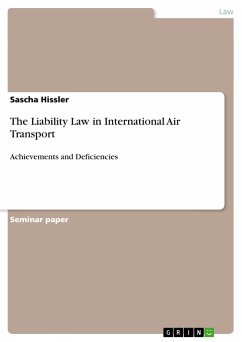This book explores the central problems underlying the insurance of aviation war and terrorism risks and associated perils. It critically analyses the reasons why conventional insurance markets are unwilling or unable to provide sustainable insurance coverage for aviation war and terrorism risks in the aftermath of catastrophic events such as the terrorist events of September 11, 2001. It also examines some of the prominent concepts proposed and/or implemented after 9/11 to determine whether and to what extent these concepts avoid identified pitfalls. Like many of life's essentials, the importance of insurance is most evident when it is not available. The sheer scale and magnitude of the insurance losses that followed 9/11 caused conventional insurance markets (which hitherto had been offering generous insurance coverage for aviation war and terrorism risks to air transport operators for little or no premium) to withdraw coverage forthwith. The ensuing absence or insufficiency ofcommercial insurance coverage for aviation war and terrorism risks has sparked a global search for viable and sustainable alternatives. Ten years have since elapsed, and despite numerous efforts, the fundamental problems remain unresolved. The book proceeds on the premise that the underlying issues are not entirely legal in nature; they have immense economic, psychological and policy implications that cannot be underestimated. A multidisciplinary approach is therefore used in examining the issues, drawing heavily upon analytical principles adapted from law and economics and behavioural law and economics. It is hoped that the resulting study will be beneficial not only to lawyers and those interested in aviation insurance but also to economists, air transport insurance program managers, capital market investors and governmental policymakers, both at the national and international levels.
Bitte wählen Sie Ihr Anliegen aus.
Rechnungen
Retourenschein anfordern
Bestellstatus
Storno








